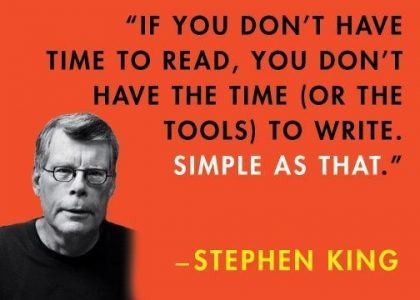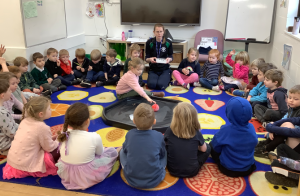
Woodpeckers Bird of Prey
“I thought it was really interesting and an amazing experience getting so close to the birds” Florence
Home » Writing

Writing at Woodmancote is closely linked to our reading, as we believe that great readers make great writers! Our writing units are based around high quality texts, our wider curriculum and real-world experiences.
We cover a range of genres throughout each year group and ensure that children are able to write for a range of purposes. We aim to give children a real reason for writing with a final piece that has meaning and purpose e.g. creating stories for younger children, writing letters to people of interest and sending these, sharing work with other classes or parents.
Our aim is for children at Woodmancote to develop a love of writing. Writing lessons are based on a key reading text, a topic or real life experience.
Units of work are planned with the 4 main purposes of writing in mind (Entertain, inform, persuade, discuss) and teachers will look at existing examples of a text to identify structural, language and punctuation to create that piece of writing.
In Reception, children are encouraged to write for a range of purposes both in their independent play and in more formal adult led sessions. Building on their early mark making journey, children use their phonic knowledge, to ‘sound out’ to spell and use the handwriting skills they have learnt to write simple words, captions and sentences. They use sound mats and visuals to aid their independence.
In Year 1 and 2 children build on the skills learnt in EYFS to develop their writing. They begin to build their writing stamina and incorporate the many skills needed to become accomplished writers.
In Years 3-6, teachers use a range of strategies such as shared writing, skills lessons and independent writing to develop children’s writing. They complete a published piece of independent work for each unit to share their understanding and progress.
See our writing toolkits below:
Read about the 4 purposes of writing genre expectations below:
At Woodmancote, we realise how important it is for our children to have access to an extensive vocabulary, to be successful both as a reader and as a writer. The meaning of words and new vocabulary is taught and explored through all aspects of our English curriculum; reading, writing and oracy (speaking and listening). Vocabulary activities are also built into all other subjects across the curriculum and vocabulary lists have been created for every foundation subject within the curriculum.
This year, we have changed our approach to the teaching of spelling and use a phonic approach from Year 2 and all the way up to Year 6. We believe that this builds on children’s prior knowledge from EYFS and Year 1 and ensures key spelling rules and phonic patterns are embedded. We use Spelling Shed to guide our teaching of spelling.
Children have access to ‘Spelling Shed’ in school and at home, where they can practise their weekly spellings as part of their homework from Years 2 – 6.

At Woodmancote School we are currently starting cursive handwriting in Year 1. By taking this approach, we are envisaging that by 2024-25, the whole school will be writing in a cursive style.
In Preschool, fine motor skills are developed as part of the Early Years framework and in Reception children build these skills and then begin to learn correct formation of letters as new sounds are taught. These are printed non cursive letters.
From Year 1 in Spring Term onwards – Children will be taught letter formation using the pre cursive style. Teachers will assess children’s handwriting and encourage them to join their letters in a cursive style once they are developmentally ready.
One formal handwriting session will be taught in all classes per week from Year 1 but handwriting is a cross-curricular task and will be taken into consideration during all lessons.
Children will start handwriting using a soft pencil. When fine motor skills and competency in handwriting have been established, they will be given a choice to use a pen or continue to use a pencil. Children are expected to take pride in their work.

Early writing activities:
Improving writers:
More confident writers:

“I thought it was really interesting and an amazing experience getting so close to the birds” Florence

“The climbing wall was amazing! If you like to be brave and adventurous then it will be the perfect thing for you. You climb up the

Our Year One children had fantastic fun learning all about hedgehogs recently. A huge thank you to Woodmancote Parish Council who made a donation to

In Reception we have been learning about Antarctica. We have been exploring how very different the continent of Antarctica is to where we live in

Year 5 – Design and Technology trip. Yesterday, some Year 5s took part in a DT activity evening with Mr Ward and Mr Ridal at

Stinger Netball League Matches On Tuesday 6th February, 8 children represented the school, playing in 4 netball matches at Swindon Village Primary School. Despite not
